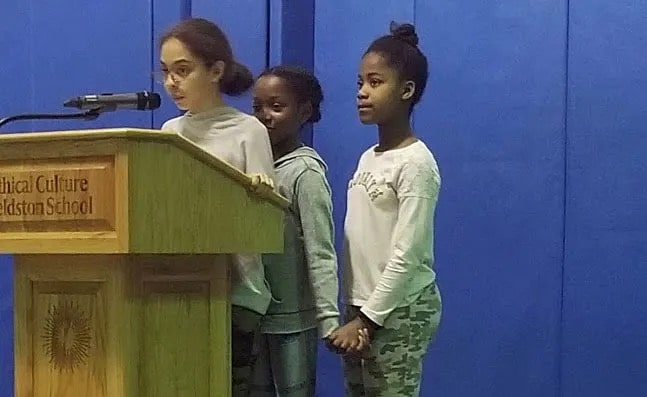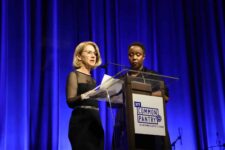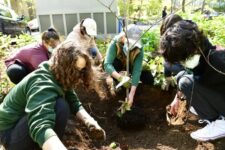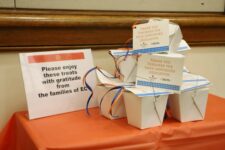Early on a June morning in 2015, Bree Newsome put on a helmet and scaled a 30-foot pole outside the South Carolina State House. At the top, she paused to undo the flag waving there — a Confederate flag symbolizing centuries of racism and racial terrorism. With the flag in her hand, she shouted, “You come against me with hatred, oppression, and violence. I come against you in the name of God. This flag comes down today.”
As soon as Newsome descended, police arrested her and quickly re-raised the flag. But the message was clear: That flag had no place outside a government building. Soon after Newsome’s heroic act of resistance, then-Governor Nikki Haley signed a bill to remove the flag permanently from the State House.
The action catapulted Newsome into the national spotlight and reignited scrutiny of Confederate flags on government property throughout the South. Newsome became a voice against the endemic anti-Black racism in America, and continues activism work at the local, national, and international levels.
To celebrate Black History Month, the Ethical Culture Fieldston School community was extremely fortunate to welcome Newsome as a keynote speaker. “It was fate that led her to us because of the activism of the kids at school. And thinking about where we are politically and what’s been happening in our nation, it was just a no-brainer to pursue her,” says Michell Tollinchi, an Ethical Culture parent and one of the co-organizers of the event. “The school curriculum encourages students to be active participants in their communities and to right wrongs,” says co-organizer Aisha Greene, Ethical Culture parent. “You can be a bystander or an active doer, and our school encourages active doers,” she says.
Ethical Culture Diversity, Equity, and Inclusion Coordinator Vanessa D’Egidio engaged younger ECFS students by meeting them at their level. The night began in the 6th floor Cafeteria, where organizers set out interactive stations aimed at younger attendees. A cozy rug had been brought into the room, where children and families could choose from a wide variety of books centered on activism. An art station with coloring books from organizations like Black Lives Matter served as a creative entry point to action. And D’Egidio repurposed cardboard boxes as canvases for signs on which students wrote slogans around racial and environmental justice.

Parents, guardians, and families mingled together while snacking — as Greene points out, “when you eat together, you’re building relationships.” The crowd was a mix of families with students from all four divisions. “The cafeteria was buzzing,” Tollinchi says.
The 90 or so attendees packed into the Gym for Newsome’s keynote, filling every chair and leaving some parents to stand in the back. Despite available childcare, many of the children present stayed for the keynote. In fact, four 5th Graders took a leadership position and introduced Newsome to the crowd. Dominique, Clarke G. ’27, and Sarah J. ’27 divvied up an introduction about Newsome’s biography and accomplishments, while Jerry H. ’27 explained the Q&A process. “When my mom showed [Newsome’s action] to me, I was so surprised that a person who had made such a big change was coming to the School,” Clarke says. “It just made me really happy to be able to work on that and introduce her with my friends.”
Newsome launched into her keynote — a sweeping history of racism and racial terrorism both nationally and internationally. Her presentation featured a slideshow of profound images: Trayvon Martin, men who developed the Confederate flag, Emmett Till, parishioners at the AME Church murdered by Dylann Roof. There were also powerful images and tribute art of Newsome’s taking down the flag, including an illustration depicting Newsome as Wonder Woman.
Newsome also delved into her own history, tracing her journey from being an outspoken kid to a full-fledged activist. She spoke about her awakening during the start of the Black Lives Matter movement, and about the large role young people play in organizing. “She put out a call to action for the kids in the room to think about what it is that you’re passionate about and why it is important that you speak up and that you’re not silent in the face of injustice,” D’Egidio says.
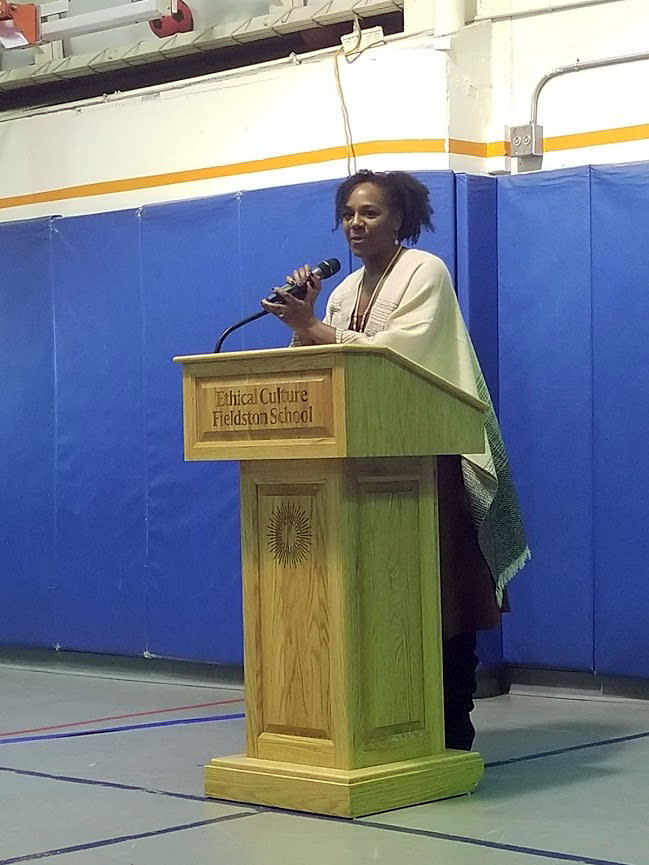
For Sarah, one aspect of Newsome’s talk that especially resonated was “the fact that she wasn’t just giving credit to herself; she was giving credit to one of the people who were actually there with her.” In the now-legendary status of Newsome’s action, one figure who is often overlooked is her ally, James Tyson. Newsome explained that while she was climbing up, officers threatened to taser her, which would have electrocuted her given her place on a metal pole. Tyson wrapped his hands around the base of the pole, telling the officers they’d have to electrocute him, too. It’s a profound example of the allyship needed from white people, as it’s “not just the work of people of color to dismantle racism,” D’Egidio says. It’s the critical work of “putting yourself at risk, and that’s truly what it means to stand up and to be an ally,” she says.
Newsome also spoke to the numbers needed for an action with real significance: “Most people just think it was her idea when it really wasn’t,” Dominique M. ’27 says. “It was actually a whole group effort. It wasn’t random; it was planned out.” Newsome connected this community effort to Rosa Parks’ famous demonstration, which was not an isolated act but a strategic action within a group movement.
Following Newsome’s keynote, the conversation opened up for a Q&A. Many questions came from the students: What kind of pressure did you feel before you took down the flag? (She felt relieved when it was done, she said, joyous and relieved). How many times have you been arrested? (Twice.)
The night was a resounding success and was personally meaningful to the attendees. “It was special to me because I’ve only met a few activists in my life, and they are all probably related to climate change, and so it was really meaningful meeting an activist who spoke for racial equality,” Jerry says.
Tollinchi adds, “It really featured and highlighted all of the powerful people in the Black community who are doing amazing things for our society. For young people like my children, they can see themselves and how they can effect change and how they can be a part of history.”
